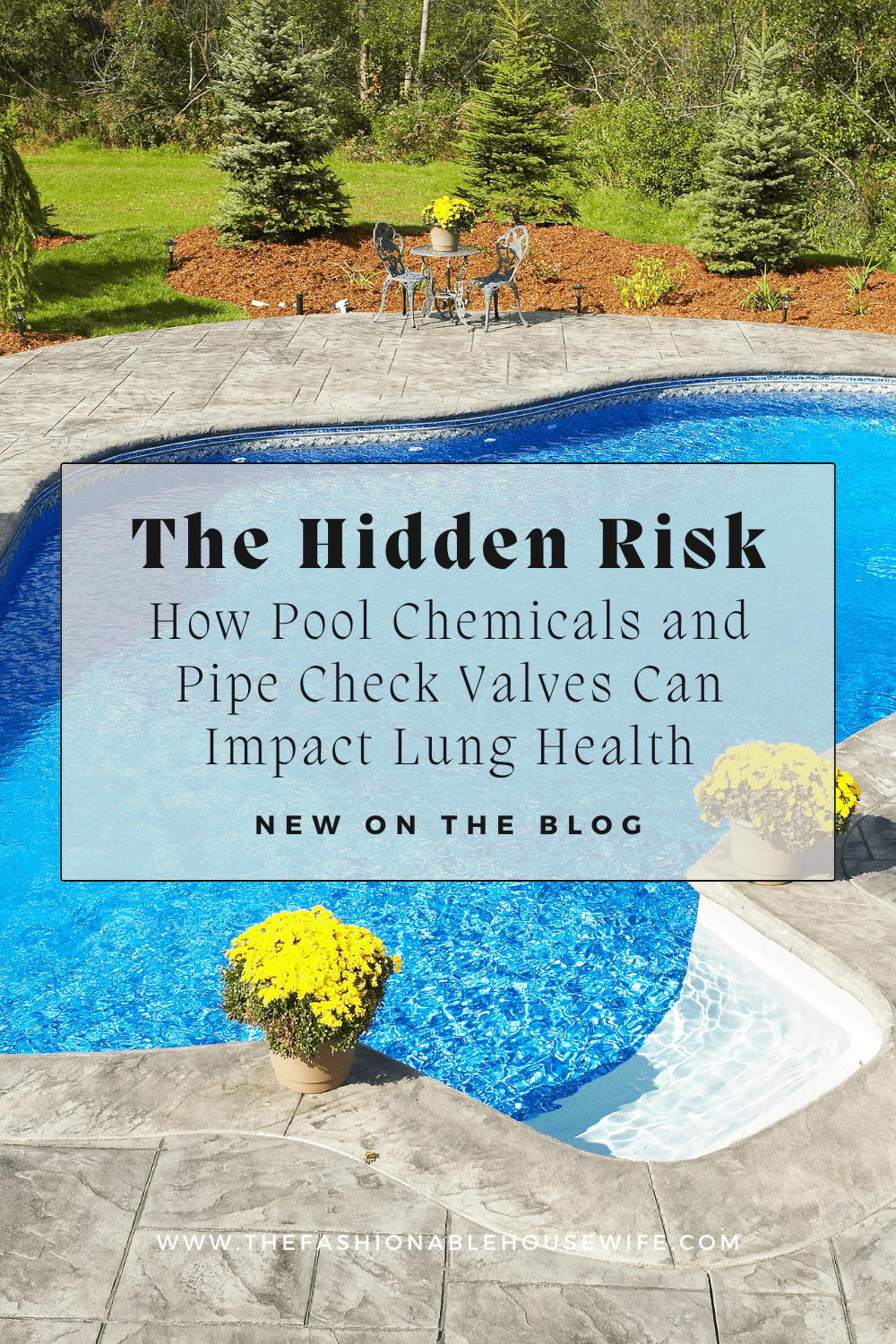The Hidden Risk: How Pool Chemicals and Pipe Check Valves Can Impact Lung Health

Swimming pools are a source of enjoyment, fitness, and relaxation for millions of people. However, the risky pool chemicals used to keep them clean and safe can sometimes have unintended health consequences—particularly for the respiratory system. While chlorine and other pool treatments are essential for preventing the growth of bacteria and maintaining water quality, their byproducts, especially in combination with inadequate ventilation or faulty equipment like pipe check valves, can pose a risk to lung health. Let’s talk about risky pool chemicals and how to stay safe.
Understanding Risky Pool Chemicals and Equipment
Chlorine is the most widely used disinfectant in pool maintenance. It’s added in various forms—such as calcium hypochlorite, sodium hypochlorite (liquid bleach), or chlorine gas—to kill harmful microorganisms. Other chemicals, such as bromine, algaecides, and pH adjusters like muriatic acid and sodium carbonate, are also commonly used.
When chlorine interacts with organic matter-like sweat, urine, and body oils, it forms chloramines—chemical compounds that can irritate the respiratory system. These chloramines are often released into the air above the pool surface, especially in indoor pools where ventilation may be insufficient.
Adding to the complexity, mechanical systems such as pipe check valves play a critical role in pool plumbing. These valves are designed to prevent backflow and ensure water flows in the correct direction through the filtration and chemical dosing systems. When pipe check valves malfunction or degrade, they can allow contaminated or chemically concentrated water to re-enter parts of the system it shouldn’t, potentially leading to chemical imbalances or the release of excess chlorinated vapor into the air—thereby increasing the likelihood of airborne exposure to harmful byproducts.
Chloramines, Equipment Issues, and Respiratory Effects
Airborne chloramines are a significant concern for respiratory health. Inhalation of these compounds can irritate the eyes, nose, throat, and lungs. This risk is compounded in situations where poor ventilation or malfunctioning equipment—such as leaky or stuck pipe check valves—exacerbate the accumulation of chemical vapors.
People who spend extended time in or around pools, including competitive swimmers, coaches, maintenance staff, and lifeguards, may experience chronic coughing, wheezing, chest tightness, or shortness of breath from risky pool chemicals. Long-term exposure has been linked to asthma development and worsening symptoms in those with pre-existing respiratory conditions.
Asthma and Pool Environments
Research shows a correlation between regular exposure to heavily chlorinated pool environments and higher rates of asthma, particularly among children and frequent swimmers. Young individuals are especially vulnerable because their developing lungs are more sensitive to environmental irritants.
Indoor pools pose a greater risk due to confined air circulation. When equipment such as pipe check valves fail to function correctly, it can contribute to chemical distribution problems that worsen air quality due to risky pool cheimcals. This creates a perfect storm of irritants, increasing the risk of asthma or exercise-induced bronchoconstriction (EIB) among pool users.
Preventing Chemical-Related Lung Irritation
Mitigating the respiratory risks of pool environments requires a combination of chemical management, equipment maintenance, and facility design:
- Maintain Proper Water Chemistry: Keep chlorine and pH levels within recommended ranges to minimize chloramine formation. Safety is so important when using risky pool chemicals.
- Inspect and Maintain Pipe Check Valves: Ensure valves are functioning correctly to prevent backflow and chemical buildup in unintended areas.
- Shower Before Swimming: Reduces the amount of organic matter introduced to the pool.
- Ensure Proper Ventilation: Indoor facilities should have effective air circulation to disperse harmful vapors.
- Monitor Symptoms: Swimmers and staff should be aware of respiratory changes and limit exposure if symptoms arise.
Conclusion
Swimming offers numerous health benefits, but it’s important not to overlook the potential risks associated with risky pool chemicals and plumbing systems like pipe check valves. When these systems are not properly maintained, they can contribute to poor air quality and increase the risk of respiratory irritation. By addressing both chemical management and equipment functionality, pool operators can create a healthier environment that allows everyone to enjoy the water safely and without compromising their lung health.


